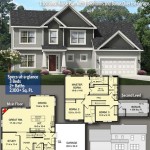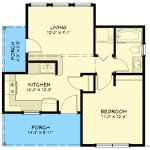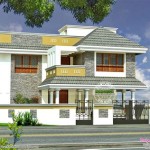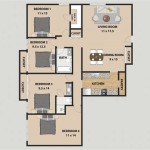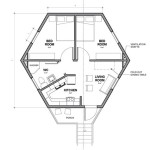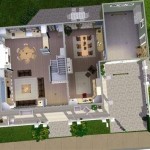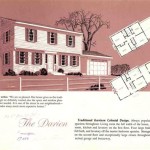Efficient Use of Space: Essential Aspects of Floor Plans
In today's fast-paced world, space is a precious commodity. Whether it's in our homes, offices, or public spaces, maximizing the use of available area is crucial for creating functional and comfortable environments. Floor plans play a vital role in this process, dictating how space is allocated and utilized.
An efficient floor plan optimizes the flow of movement, natural light, and ventilation while ensuring that all necessary functions are accommodated. Here are some essential aspects to consider when designing or evaluating a floor plan for efficient space utilization:
1. Circulation and Flow
Circulation refers to the movement of people and objects within a space. An efficient floor plan minimizes unnecessary movement and creates smooth transitions between different areas. Consider the placement of doors, hallways, and other pathways to maximize accessibility and avoid bottlenecks.
2. Natural Light and Ventilation
Natural light not only contributes to well-being but also reduces energy consumption. Position windows and skylights strategically to maximize the flow of daylight into the space. Proper ventilation ensures fresh air circulation and reduces the risk of indoor air quality issues.
3. Functional Zoning
Divide the space into distinct zones based on its intended use, such as living, dining, kitchen, or work areas. Separate these zones clearly, considering both physical and visual barriers, to avoid clutter and maintain a sense of organization.
4. Storage Solutions
Smart storage solutions are key to keeping a space tidy and maximizing usable area. Incorporate built-in shelves, drawers, and closets to store belongings efficiently. Consider vertical space as well, with tall cabinets and wall-mounted storage.
5. Furniture Placement
The placement of furniture can significantly impact the overall efficiency of a space. Choose furniture that is proportionate to the size of the room and arrange it to maximize flow and minimize obstructions.
6. Multipurpose Areas
In smaller spaces, consider using multipurpose areas that serve multiple functions. For example, a kitchen table can double as a dining table, or a living room can accommodate a guest bed or home office setup.
7. Technology Integration
Leverage technology to enhance space utilization. Smart lighting systems can adjust light levels based on occupancy, while automated home control systems can simplify tasks and reduce clutter.
Conclusion
Efficient use of space in floor plans is essential for creating functional, comfortable, and aesthetically pleasing environments. By considering the factors discussed above, designers and homeowners can optimize the allocation and utilization of space, maximizing its potential and enhancing the overall quality of life.

Affordable Home Design Efficient Floor Plans

Design Tricks To Get The Most Out Of A Floor Plan

Efficient Use Of Space 6901am Architectural Designs House Plans

Efficient Use Of Space 5167mm Architectural Designs House Plans

Office Floor Plans Why They Are Useful

Creating A Functional Home Using Chief Architect For Efficient Space Planning Chiefblog

Rua 141 And Rafael Zalc Make Efficient Use Of Space Within Renovated São Paulo Apartment Architectural Floor Plans Layout

Space Planning 101 How To Design Efficient Spaces 2024 Blog

Floor Plan Friday Optimal Northerly Aspect Energy Efficient House Plans Home Design

Designing An Efficient Floor Plan 11 Key Characteristics To Create Your Perfect Space

